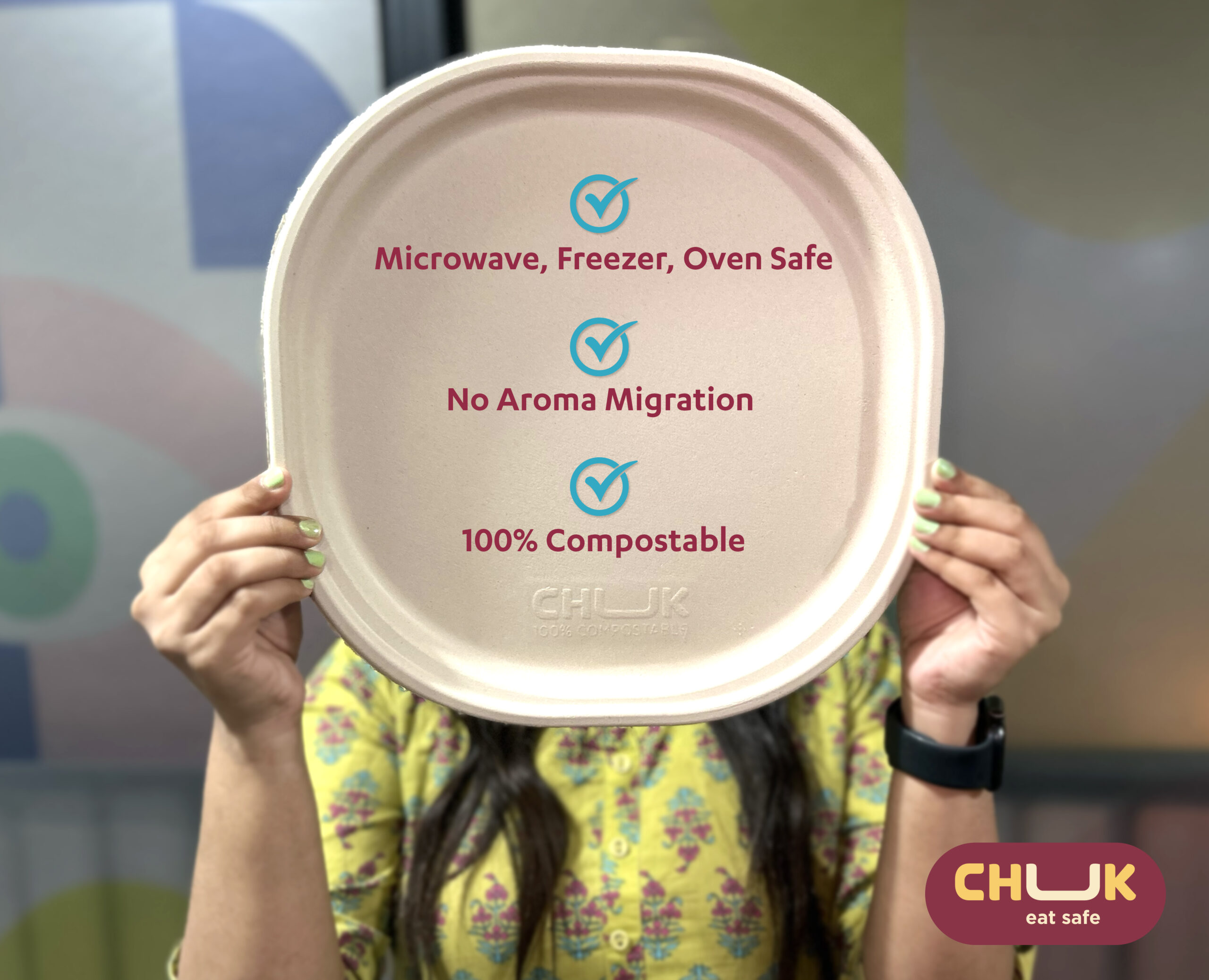10 Tests to Judge the Quality of Disposable Plates
The quality of disposable plates is often an overlooked concern with some serious consequences. Every plate in the market is not designed with the same quality standards. Some might break, leak, and leave their flavour on the food along with a very bad impression on the guests.
Here are ten tests to help you with the quality of disposable plates to make sure your dinner setting or casual parties are perfect.
Visual Inspection
A simple visual inspection can save time and effort, if we can notice that the biodegradable plates have visible damage.
How to Perform:
- Take a thorough look at the plate for uniform design, thickness, and texture.
- Uneven edges, cracks, and discolouration are signs of damage.
What to Look For:
- Poor quality will have manufacturing defects on biodegradable or plastic plates. Remember to check a few plates for visual tests before proceeding with other tests.
Taste and Odor Test
Low quality disposable plates can add unwanted odour and flavour to the food. It can ruin the entire experience even if you spend hours preparing the perfect meal.
How to Perform:
- Take a deep sniff and check for any foul odour on empty plates for eating.
- Put some food on the plate and check if the flavour remains the same.
Guess what? Chuk compostable tableware has certifications that assure no aroma-migration whether you are eating piping hot sambar or saucy pasta.
Durability Test
Durability is a very critical aspect of the quality of disposable plates. You don’t want the guests to spill food because of some low-quality plates that cannot hold some weight.
How to Perform:
- You need to place some heavy items at the centre of the plate. The weight of the item should be around the maximum weight you want the plates to hold.
- Now, try to lift the plates for edges and check for any signs of damage. Low-quality plates will break or bend under reasonable stress.
What to Look For:
- High-quality plates for eating should maintain their shape and integrity under the required weight. Keep in mind the dinner plate measurements before checking the durability.
Leakage Tests
Greasy or wet food requires eco-friendly disposable plates that prevent leakage and sogginess. A leakage test is a must in a country like India which is famous for its curries.
How to Perform:
- Put some water on the plate and wait for 10 to 15 minutes.
- Observe the surface of the plate for any absorption, leakage, or damage.
What to Look For:
- Eco-friendly disposable plates prevent leakage and moisture absorption while holding the liquid.
Fun Fact: Did you know? Each batch at Chuk goes through a strict 45-minute oil and water testing process!
Microwave Safety Test
Microwave safety tests are important for health and safety as some materials may release harmful chemicals. If you are planning to reheat the food with disposable plates, we recommend the following test.
How to Perform:
- Use a small amount of food and put the disposable plate in the microwave with it.
- Heat on high temperature for a couple of minutes and then check the quality of the disposable plate.
What to Look For:
- Microwave-safe tableware should not melt, warp, or emit any unwanted odours.
Of course, Chuk compostable tableware is microwave, freezer, and oven safe. Do you want proof? Here it goes! Certifications!
Compostability Test
The major reason people are switching to eco-friendly disposable plates is their compostability. You must not overlook such an important aspect that requires only a little attention.
How to Perform:
- Every disposable plate requires certification from local authorities. In India, companies need certification from CIPET to manufacture the same.
- Check for certification marks on the packaging or website for compostability.
- It will take a few weeks to check for the breakdown of items naturally in a composite pit if you want to test it yourself.
What to Look For:
- Certification from environmental bodies is often enough to prove the compostable nature.
- Bagasse plates and other compostable items will decompose faster in 180 days approximately in your compost pit.
Cut Resistance Test
Some plates are not designed to withstand the sharpness of a knife. You may end up tearing the bagasse plates while trying to cut through a piece of food.
How to Perform:
- Take some food on a plate and use a knife or fork to cut through it.
- You can put some extra force as not every guess will use their gentle side for delicacy.
What to Look For:
- There should be no sign of cutting or tearing on the plate with the use of a knife or fork.
Stackability Test
Stacking plates on tables will help with the best use of available space. Not only the nested plates are space efficient but they also need to look good.
How to Perform:
- Stack plates on top of each other. You can use one or two dozen plates.
- Consider the looks and amount of space before making up your mind.
What to Look For:
- There should be minimum gaps between the plates to ensure storage efficiency and easy transportation.
Temperature Resistance Test
The same issue that comes with microwave safety may come with sudden temperature changes on the surface of a bagasse tableware. You need to make sure they are durable and safe if the served dishes are too hot or too cold.
How to Perform:
- Use two plates, use one for a hot dish and the other for a cold dish.
- Now, wait for a few minutes to check for any damage or unpleasant odour.
What to Look For:
- Good quality plates will endure extreme changes in temperature with no emission of harmful chemicals.
Flexibility Test
Disposable plates are flexible but to a certain extent. You want flexibility to a reasonable degree and it is fairly simple to check.
How to Perform:
- Start with gently pushing the plate and slowly increase the pressure.
- It is okay to break a few disposable plates while looking for the right support.
What to Look For:
- The balance between flexibility and rigidity is important as plates too flexible will not provide adequate support while too much rigidity can easily break the plate.
Conclusion
Selecting the right quality of disposable plates can significantly enhance your dinner setting. With the help of these ten tests, you can ensure the selected plates are safe, durable, and reliable. Whether you opt for a 12-inch plate, microwave-safe tableware, or eco-friendly disposable plates like plate bagasse, ensuring their quality is critical.
At Chuk, you will find all types of bagasse tableware. Chuk’s award winning tableware design comes out flying in all the tests mentioned above. With its innovative design, Chuk tableware has broken the myth that sustainable products are low quality and lack aesthetics.


